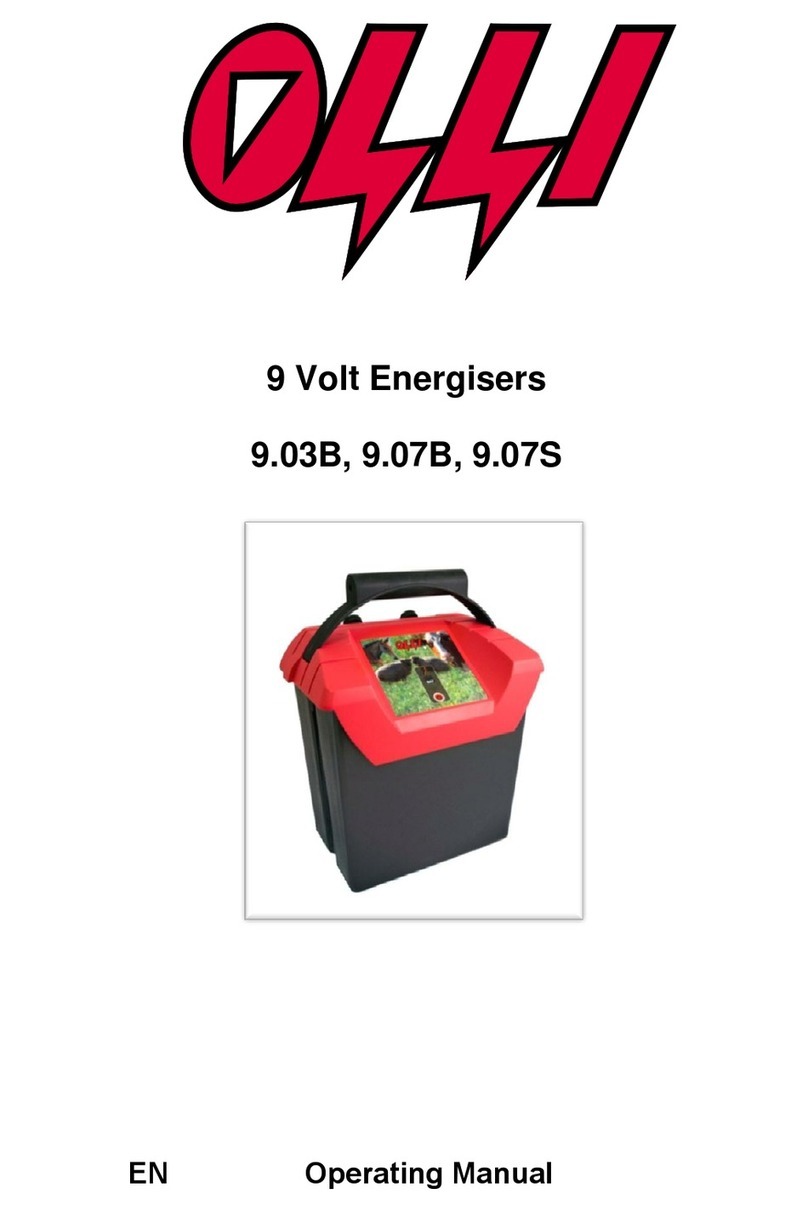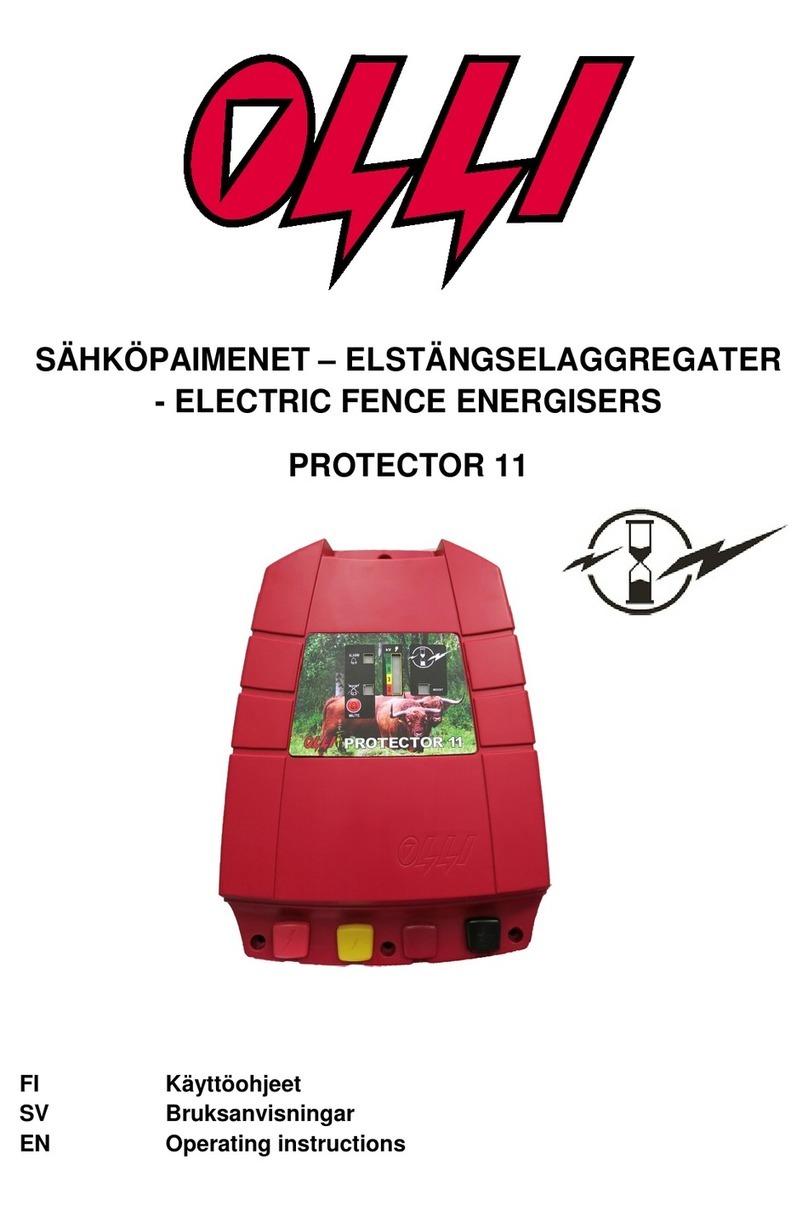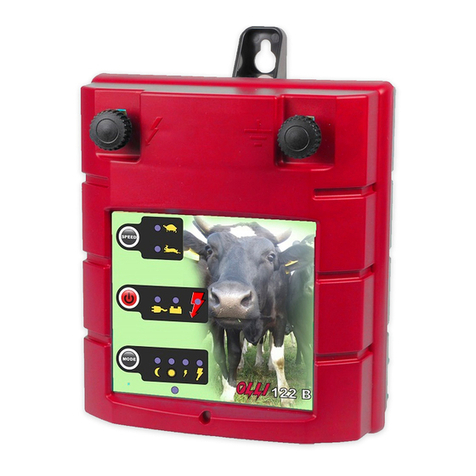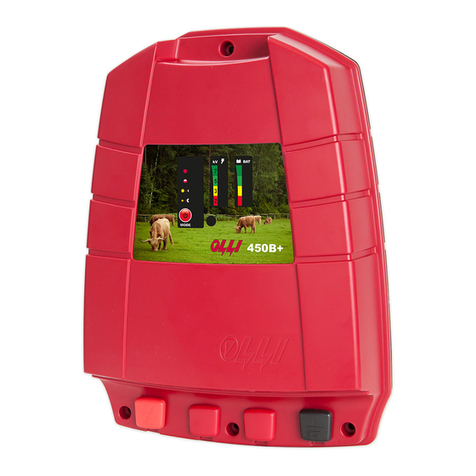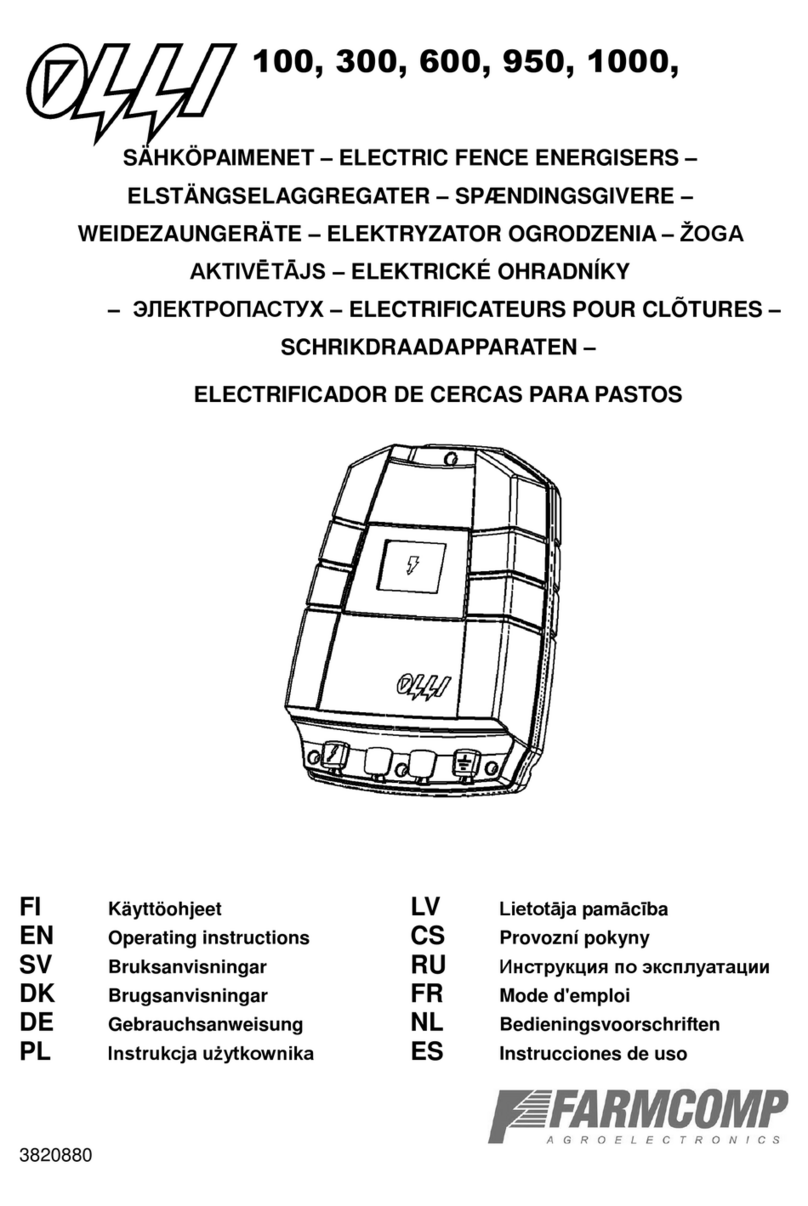
EN
10
6. Disturbances in electrical devices
The radio frequency of the pulse of a fence energiser is so low that a correctly
installed electric fence does not cause any visible or audible disturbances in radio
devices. The main reason for disturbances (typically a snapping noise in
loudspeakers) is an inadequate or incorrectly implemented earthing of the fence.
Check and fix the earthing of the fence according to the chapter 4 in this guide.
The other typical reason for disturbances is sparking. Aspark spreads a wire
spectrum electromagnetic radiation that can be heard as snapping in
loudspeakers of as horizontal disturbance stripes in TV picture.
Visible sparks on fence wires are signs of poor connections. They cause
disturbances and add resistance to the fence thus reducing its effect. Always use
proper connectors when connecting the energiser to the fence or connecting
wires to each other.
7. Lightning protection
Olli energisers are internally protected against high voltage pulses and Olli
warranty covers also lightning damage. However, it is not possible to completely
protect an energiser from damage caused by lightings. If your fence is long and in
an open location, it is advisable to protect the energiser with a separate Olli
lightning diverter. if you don't use a fence, it is advisable to disconnect the
energiser to prevent eventual lightning damages.
8. About lead batteries
The most common and cheapest 12 V battery type are the vehicle starter
batteries. An other commonly available type are the Marine/Motor home batteries,
often called ”leisure batteries”. We recommend to use the leisure batteries with
fence energisers. They tolerate discharging with a low current over a longer
period of time and they can be discharged quite deep with no internal damage. A
leisure battery will always last longer in energiser use and it may give up to two
times better capacity with one charge compared to a starter batter with the same
nominal capacity.
Vehicle starter batteries have an internal structure that gives a maximum current
output, and they are designed to be kept well charged. Therefore they are not well
suited as energisers power source. However, they can be used with energisers
but then you should take in account the following: A starter battery should be
charged well before it is empty and regularly at least once a month. The use of an
intelligent electronic battery charger will also extend the battery life. If a starter
battery is discharged with a small current over a long period, it starts to get
damaged internally (sulphating process). A starter battery can also easily be






